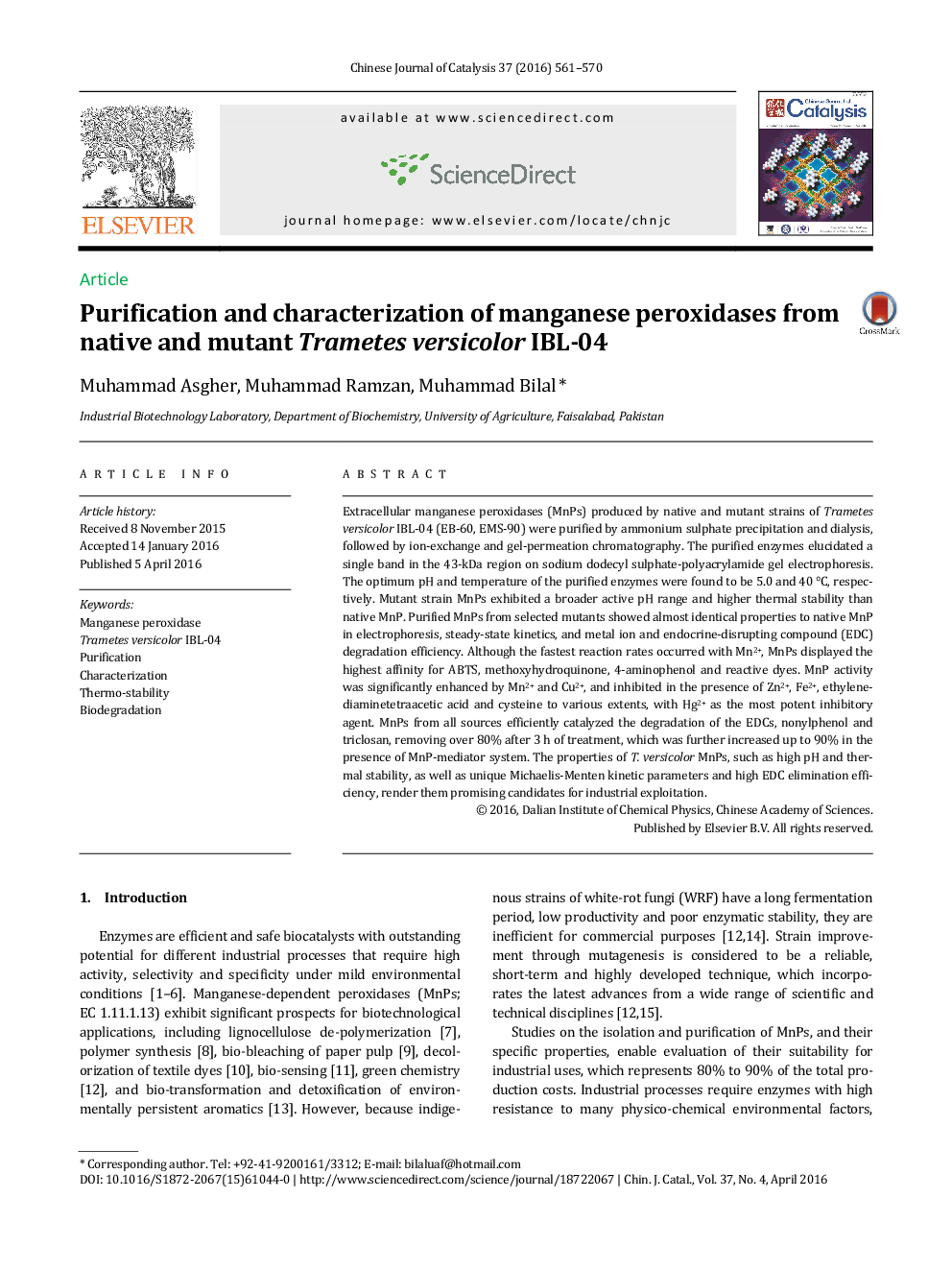| کد مقاله | کد نشریه | سال انتشار | مقاله انگلیسی | نسخه تمام متن |
|---|---|---|---|---|
| 59153 | 1419420 | 2016 | 10 صفحه PDF | دانلود رایگان |
Extracellular manganese peroxidases (MnPs) produced by native and mutant strains of Trametes versicolor IBL-04 (EB-60, EMS-90) were purified by ammonium sulphate precipitation and dialysis, followed by ion-exchange and gel-permeation chromatography. The purified enzymes elucidated a single band in the 43-kDa region on sodium dodecyl sulphate-polyacrylamide gel electrophoresis. The optimum pH and temperature of the purified enzymes were found to be 5.0 and 40 °C, respectively. Mutant strain MnPs exhibited a broader active pH range and higher thermal stability than native MnP. Purified MnPs from selected mutants showed almost identical properties to native MnP in electrophoresis, steady-state kinetics, and metal ion and endocrine-disrupting compound (EDC) degradation efficiency. Although the fastest reaction rates occurred with Mn2+, MnPs displayed the highest affinity for ABTS, methoxyhydroquinone, 4-aminophenol and reactive dyes. MnP activity was significantly enhanced by Mn2+ and Cu2+, and inhibited in the presence of Zn2+, Fe2+, ethylenediaminetetraacetic acid and cysteine to various extents, with Hg2+ as the most potent inhibitory agent. MnPs from all sources efficiently catalyzed the degradation of the EDCs, nonylphenol and triclosan, removing over 80% after 3 h of treatment, which was further increased up to 90% in the presence of MnP-mediator system. The properties of T. versicolor MnPs, such as high pH and thermal stability, as well as unique Michaelis-Menten kinetic parameters and high EDC elimination efficiency, render them promising candidates for industrial exploitation.
Graphical AbstractManganese peroxidases (MnPs) from native and chemically mutant strains of Trametes versicolor IBL-04 were purified and characterized. The mutant MnPs were active and tolerant over broader pH and temperature ranges, and exhibited remarkable potential to eliminate toxic EDCs.Figure optionsDownload as PowerPoint slide
Journal: Chinese Journal of Catalysis - Volume 37, Issue 4, April 2016, Pages 561–570
